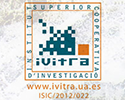PETRE, PATER PATRUM, PAPISSE PRODITO PARTUM: translation of the fragments of the first documentation of the ‘pope’ Joan
Dominique Vieira Coelho dos SANTOS, Camila Michele WACKERHAGE
Original title: PETRE, PATER PATRUM, PAPISSE PRODITO PARTUM: tradução dos fragmentos da primeira documentação referente à ‘papisa’ Joana
Published in Mulier aut Femina. Idealism or reality of women in the Middle Ages
Keywords: Church, Popess Joan, Representation, narrative, translation.
This article’s aim is to present for the first time in Brazilian Portuguese, a translation, accompanied by the Latin text, the first three documents to mention ‘Pope’ Joan. They are a small excerpt from Chronica Universalis Mettensis, wrote by Jean de Mailly, the first to mention the Popess; Chronicon Pontificum et Imperatorum, document authored by Martin of Opava, which continues this report, and, finally, the lines of De Septem donis Spiritus Sancti, or Tractatus de diversis Materiis Praedicabilibus, as it will be called here, written by Stephanus de Bourbon, who also mention Joan. Also some historiographical reflections are made altogether with a brief introduction to gender studies in the Middle Ages. Unlike other countries, the Popess is still poorly studied in Brazil. However, even being a fictional character, this figure may assist us in understanding the social imaginarium related to context where these documents were produced. By translating the mentioned works, we hope to cooperate to enlarge the possibilities of researching on the Popess.
The Construction of Space(s) and Identity(s) in Medieval Literature: Geoffrey Chaucer’s The Canterbury Tales as a Case Study
Mourad EL FAHLI
Published in Music in Middle Ages and Early Modernity
Keywords: Christendom, Cultural Interchange, Europe, Heathendom, Identity, Infidels, Representation.
This paper examines the engagement of medieval literature in the construction of identities, particularly those of Europe and Muslims. While the former is represented as a unified Christian space, the latter is depicted as an external threat that endangers God’s plan and kingdom. Hence, medieval literature distinguished two opposing spatiality’s namely Christendom and Heathendom. Such spatial configuration deliberately overlooked internal schisms and antagonisms that characterized medieval Europe and instead opted for an ideal utopian vision, which has its origin in crusading discourses that emphasized unity in the face of “infidels.” To examine these issues, the paper takes as an example Chaucer’s The Canterbury Tales, which is considered by many as one of the most influential medieval literary works. Medieval ideological othering has-ad still- shaped understandings and configurations of the various contacts between West and East and between Islam, Christianity and Judaism. The paper further enriches the discussion by a focus on cross-cultural interchange that informs Chaucer’s oeuvre, particularly the influence of Medieval Arabic scientific studies on his conception of lovesickness. Such interchange paradoxically problematizes the western condemnatory attitude towards Islam.
The awakening of Aragonese Humanism in Curial and Guelfa
Francis RASSELI
Original title: O despertar do Humanismo Aragonês em Curial e Guelfa
Published in Manifestations of the Ancient and Medieval World
Keywords: Curial and Guelfa, History and Literature, Humanism, Novel Cavalry, Representation.
When we glimpse the slow turning off of the medieval lights in the fifteenth century, we see the gradual transformation (and secularization) of the code values that guided that civilization (ethics, morality, courtesy, Christian education, etc.). In this sense, literature offers the historian, who focuses on transition time, a remarkable promontory where we can observe the interpenetration of different historical times, as taught Fernand Braudel (1902-1985). That is why the study of the cavalry novel (realistic) Curial and Guelfa allows this unveiling of life in the high layers of that century. Life in the courts, civilized life, polished life. Thus, it is in our interest to analyze how the author of the novel built a certain idealized image of their own past, as forged in a text (beautifully written) an ideal chivalrous – under the humanist guise – to take as paradigmatic model King Peter III, the Great (1239-1285) of Aragon and Valencia and Count of Barcelona. For this, we will use of the (first) translation into Portuguese made by Ricardo da Costa (by invitation of the Universitat d'Alacant) to the International project IVITRA, that was published in the University of Santa Barbara (California). Our theoretical framework is based on the concept that the real power of the Middle Ages was built by cultural advertisements of heralds that lived in the cuts, thesis defended by José Manuel Nieto Soria. Besides that, we use the concept of representation exposed by Roger Chartier (1945- ).
The sacred and the profane in the Three Wise Kings. From the Middle Ages to their origins
Irene ROMO PODERÓS
Original title: Lo sagrado y lo profano en los Reyes Magos. De la Edad Media a los orígenes
Published in
Keywords: Magi, Middle Ages, Representation, Symbolism.
In the countries of Christian tradition as well as in many others to different degrees the story of the “Three Wise Men” of the East is known who, according to the Christian version, gave their offerings to the “King of Kings” on his birth. However, beyond the myth, who were the so called Magi who according to one legend left behind trails of aromatic herbs in their wake? Are they based on real figures? Is their symbolic origin to be found in the sacred or in the profane? The purpose of this article is to explore the idea of the Three Magician of the East and to try to clarify its historical, legendary, secular and religious aspects. It will also try to show its role as a religious tool used to condition secular thought in medieval Europe. In this way, it will try to analyze how the figure of the Magi constitutes an artistic and literary symbol used for the propagation of Christianity in Medieval Europe, an example of the sacred versus secular dichotomy so characteristic of that continent. To do this, it will explore a variety of different aspects of the culture in the medieval period, as it is in this moment that the representation of the Magi as they are known today is definitively fixed in human memory.






















































































